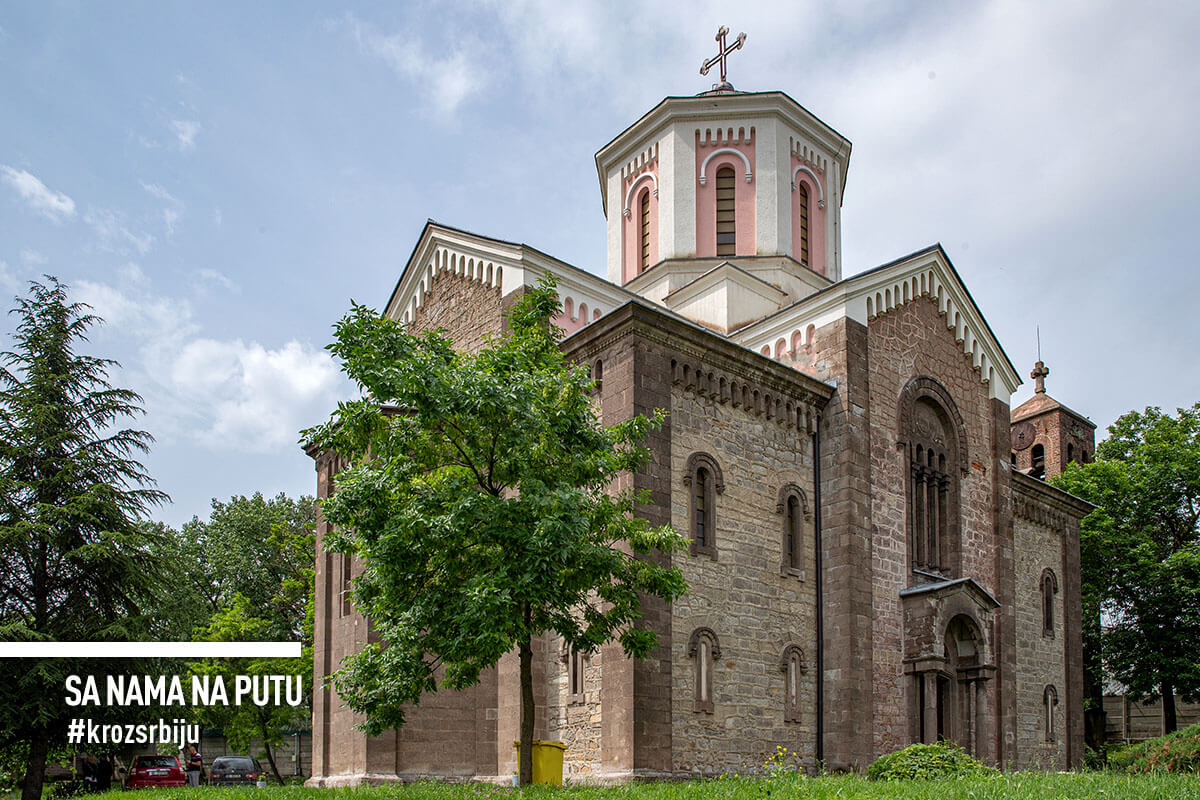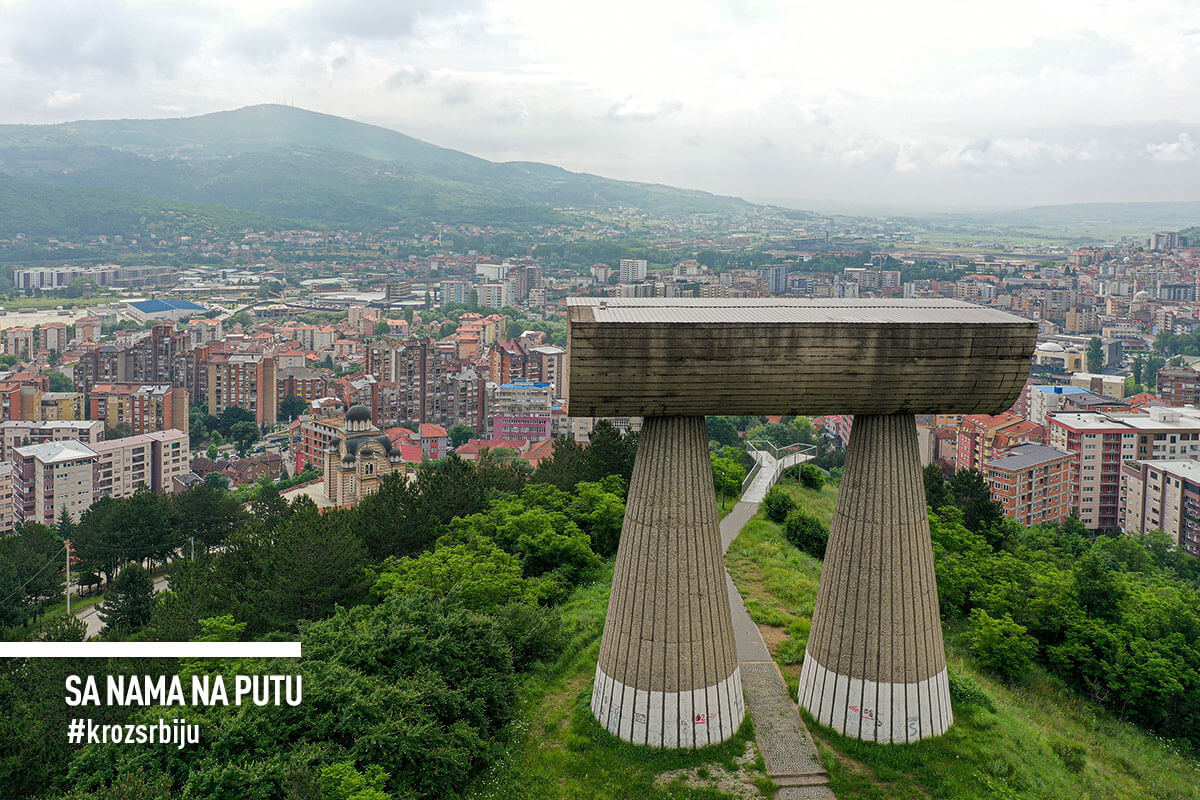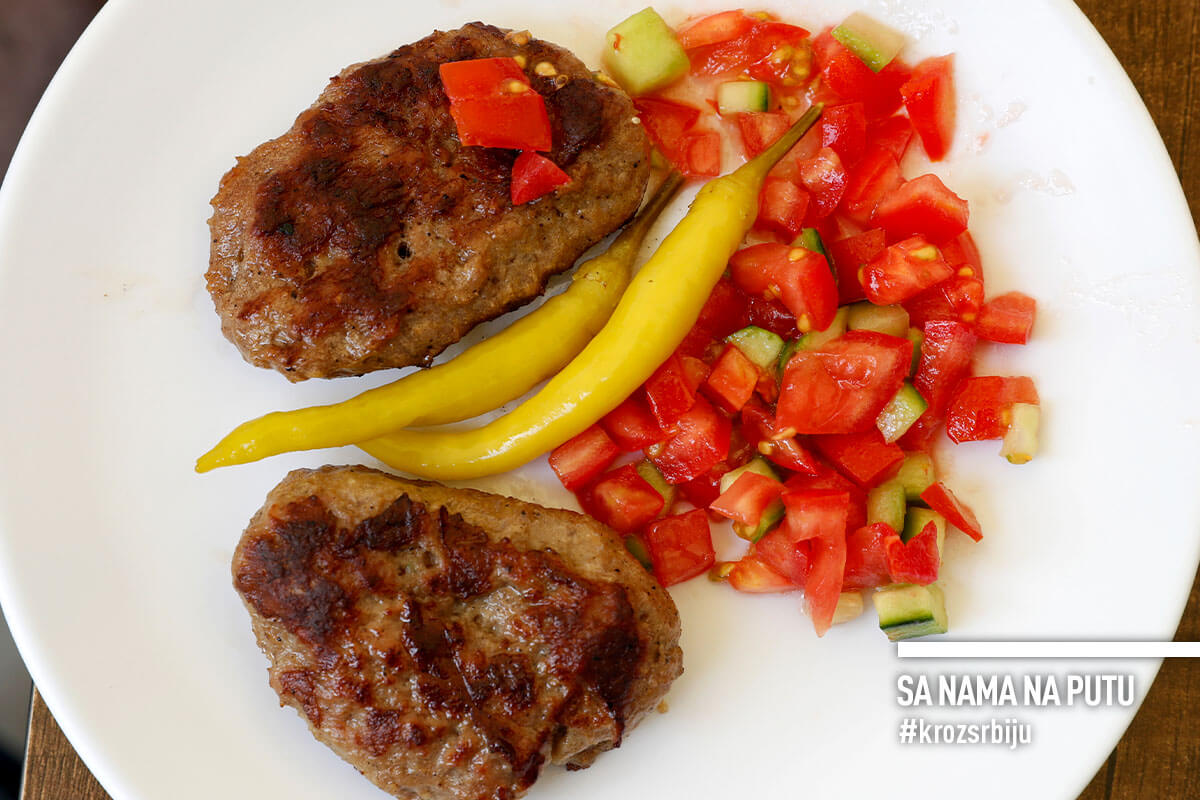Kosovska Mitrovica is for many, the most sacred piece of Serbian land. It is certainly home to the most magnificent Orthodox temples.
After the administrative crossing, we drive along the shore of Gazivoda Lake. It reminds of Zlatarsko Lake. With its emerald tones Gazivoda Lake is tucked away in lush greenery. It exudes calmness.
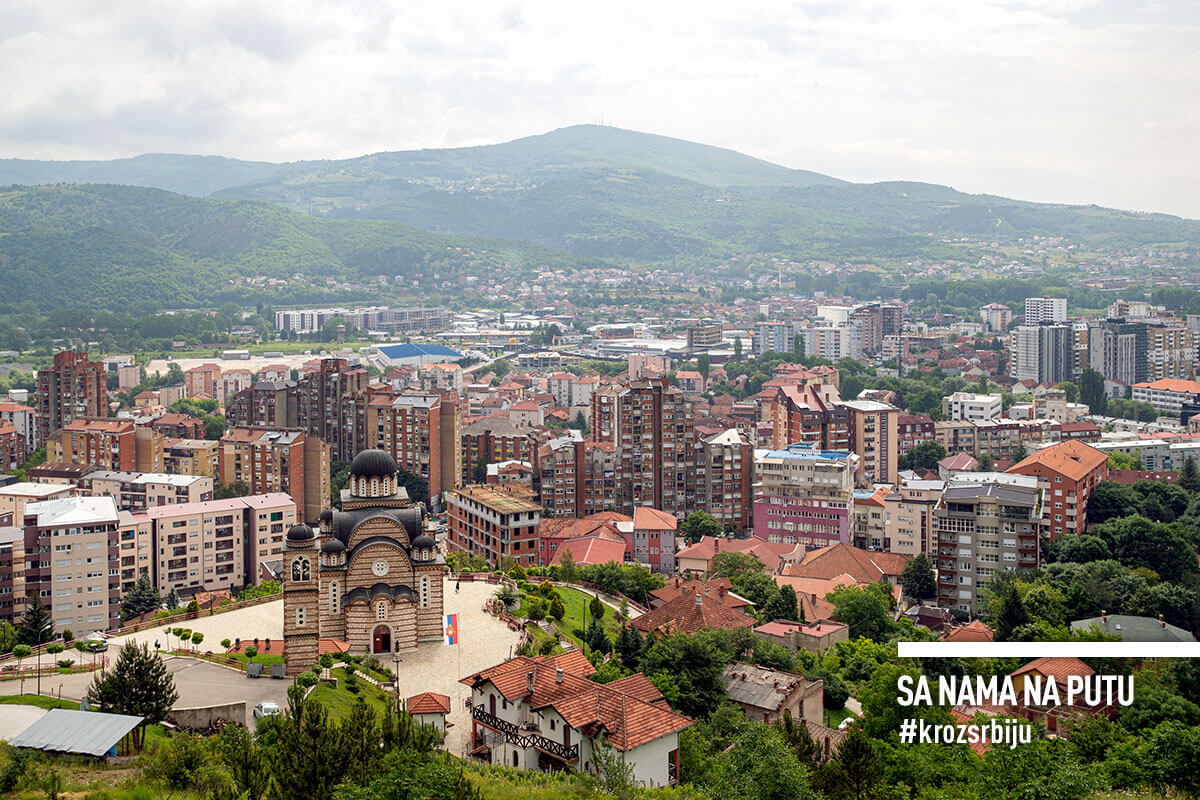
KOSOVSKA MITROVICA IS AN ANCIENT CITY
Statues and altars from the II and the III centuries were found in the city area. The city was mentioned for the first time in medieval writings. The name Mitrovica originates from the XIV century after the church of Saint Demetrius of Thessaloniki, which King Milutin donated to his endowment, the monastery of Banjska. After the First Balkan War, it became part of the Kingdom of Serbia.
It is settled in the north of the Kosovo Basin, at an almost mountainous altitude, on the edge of the Dinaric Mountains, bordered by the slopes of Golija, Kopaonik and Rogozna. From afar, the northern part of Kosovska Mitrovica acts as a hill stronghold. It was as if someone was chasing and cornering it, so when it reached the hilly hinterland, it dug in and did not depart. There is nowhere else to go. The streets are still quite narrow today, mostly on a slope, the residential buildings are old, and many are with dilapidated facades while the buildings are mostly neglected. Understandably, there are many more pressing concerns.
On the main square there is the monument to Tzar Lazar, seven and a half meters high. He holds a sword in one hand and points to Gazimestan with the other. It was first shown on Vidovdan 2016. Next to it, there is the bust of the Russian diplomat and consul in Kosovska Mitrovica, Grigoriy Stepanovich Shcherbina, who said while he was dying that he was “the first victim in the new Serbian history for the liberation of Old Serbia”. He succumbed to a wound from a Turkish bullet in 1903. On the pedestal of the monument, the words of academician Vladimir Ćorović are inscribed: “A drop of fraternal Russian blood has flowed into the streams of Serbian blood, which have flowed through Kosovo for centuries (in Serbian: Kap bratske ruske krvi kanula je u potoke srpske krvi, koji stolećima Kosovom teku).” Further towards Ibar, a pedestrian street stretches under the Serbian Tricolours spread between the buildings. They are placed everywhere – on pillars, terraces, shop windows… There is quite a number of catering facilities on the promenade. Crowded. There are many young people and children. They ride bikes, run, and kick and throw a ball.
At the end of the promenade there is a sculpture Kosovo Peony (in Serbian: Kosovski božur), in memory of the Milić brothers, three heroes who gave their lives to defend their homeland. Nearby, on the very coast, there is a monument to those killed in recent war conflicts. At the top there is a picture of the White Angel. Apart from the memory of the victims, truth be told, there are not many preserved cultural and historical buildings. Some remained across the river. We also reach Ibar, and then the church of Saint Sava in the southern part of Mitrovica.
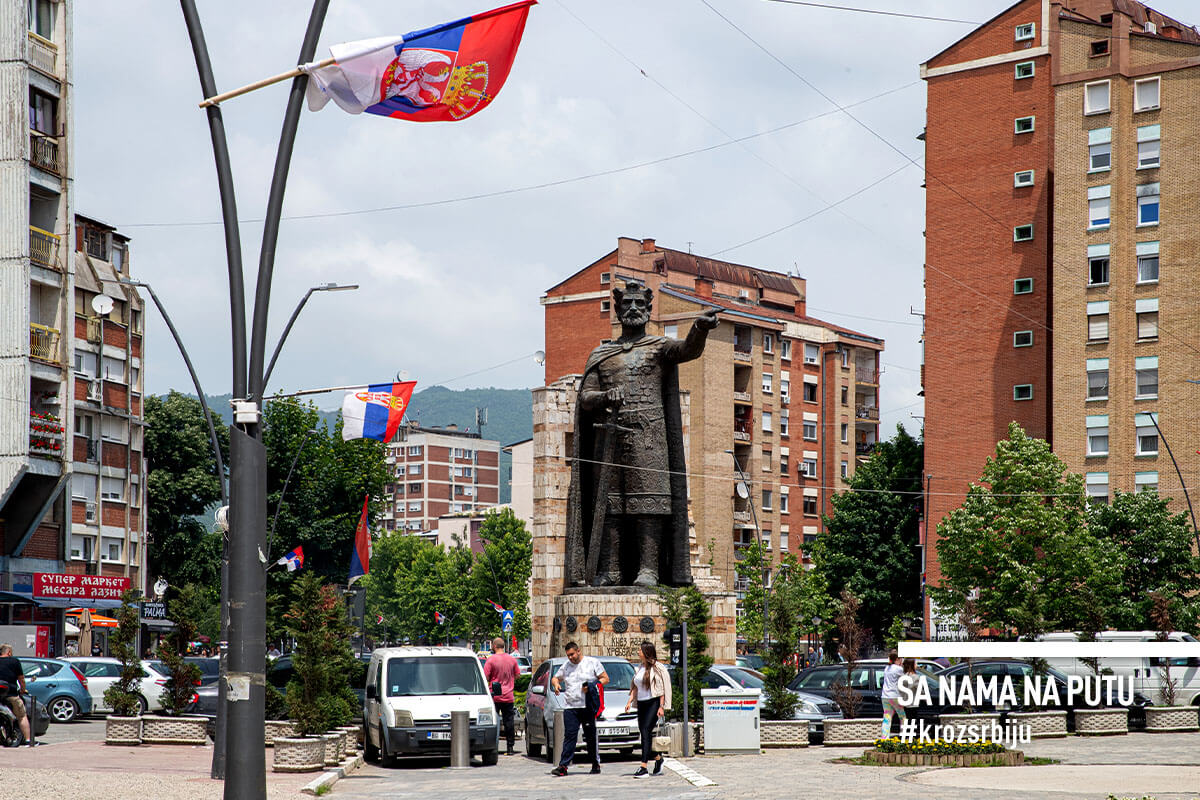
A VISIT TO THE CHURCH OF SAINT SAVA CAUSES STRONG FEELINGS
There is a guardhouse outside. We have announced our visit, so the policeman allows us to enter. Father Nenad welcomes us, visibly joyful. He does not have guests often. Religious people mostly come for the holidays. “There are more and more of them. Strangers also come sometimes“, says the Father with a beaming face, because everyone who sets foot in is worth as thousands of souls. He shows us the church port.
The construction of the temple began in 1896 and was not completed until 1921. It was built in Serbian-Byzantine style and made of stone. It had a magnificent gilded iconostasis. It was declared a cultural monument in 2000. Four years later, in the March Pogrom, it was burned and robbed. The church bell was removed. To date, it has not been set again. After the unfortunate events, it has been a landfill and a burning place for a long time, Father Nenad sadly recalls while showing us the bullet-riddled church bell tower clock. He brings us in to a church restored with great efforts. Narrow, oblong windows allow rays of light to shine through. Walls are white, unpainted, and instead of iconostasis there are arranged icons. These all are the gifts of individuals and other Orthodox temples in the country and abroad. There is still a lot of work to do, but the place of worship has come to life.
We leave with a heavy heart. The Father calls the children to say goodbye. Five boys come from the parish house, which has not yet been completely renovated. They politely and somewhat shyly wish us a good day. The Father drives them to school in North Mitrovica every day. They are the only Serbian family in the southern part of the city. Simply staying for the sake of future survival is sometimes the bravest act.
